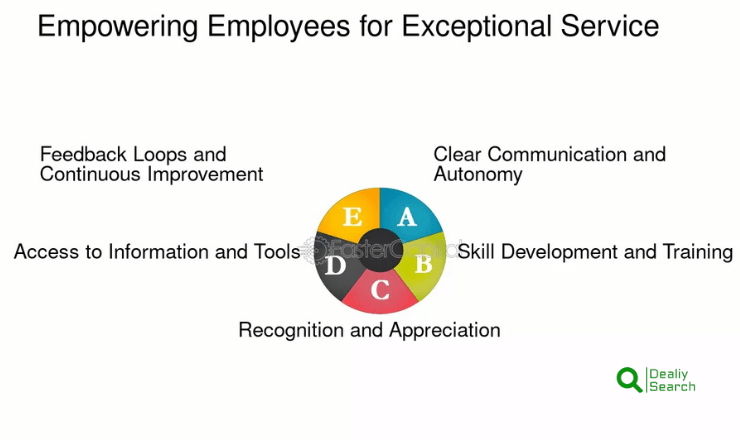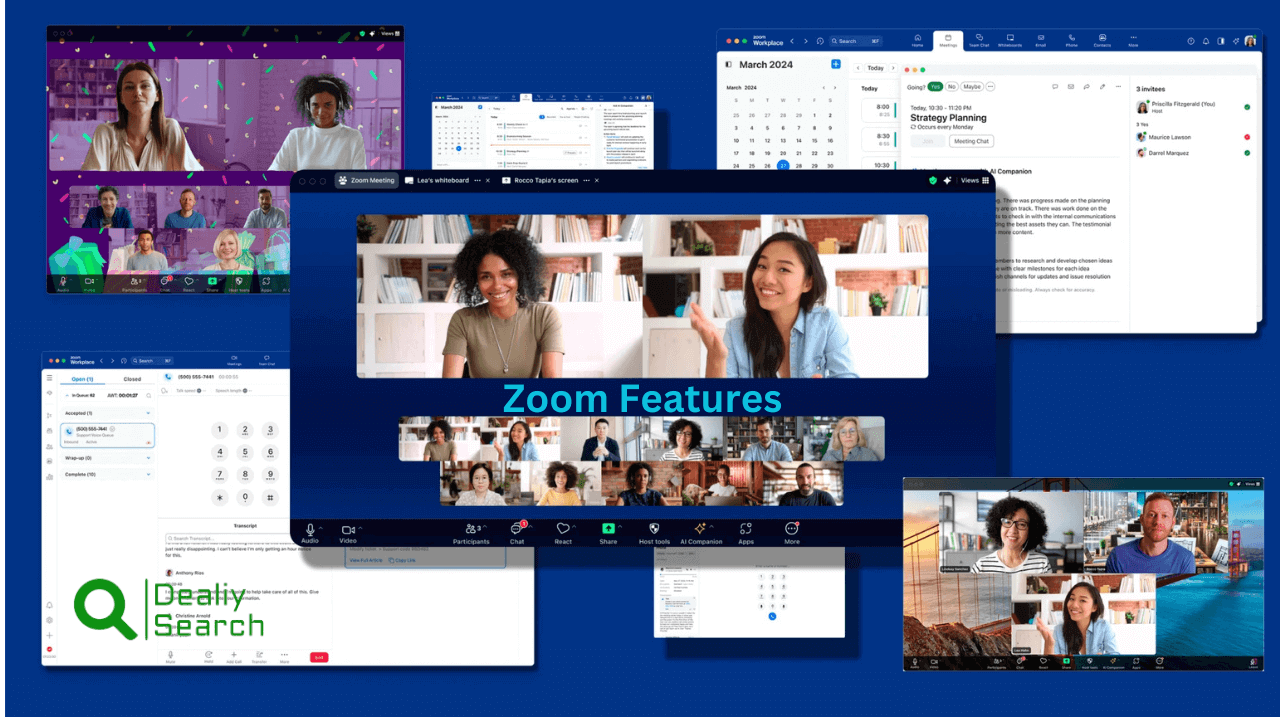Elevating the Customer Experience: Next Level Service Innovations

Fast-paced digital world, customer experience has become a key differentiator for businesses across industries. Gone are the days when quality products or competitive pricing alone could secure customer loyalty. Modern consumers expect seamless, personalized, and efficient interactions at every touchpoint. With the rise of technology, businesses are leveraging artificial intelligence, automation, and data analytics to anticipate customer needs and enhance service delivery. Customer expectations continue to evolve, demanding greater convenience, faster response times, and more humanized interactions. Companies must continuously innovate and adapt their strategies to create meaningful and lasting relationships with their customers.
Understanding Customer Expectations in the Digital Age

The modern business landscape, customer expectations are evolving at an unprecedented pace, driven by rapid technological advancements and changing consumer behaviors. The digital age has reshaped the way people interact with businesses, placing convenience, personalization, and instant gratification at the forefront of customer demands. Understanding these expectations is crucial for companies looking to stay competitive and foster long-term customer relationships.
The Shift in Customer Expectations
Customers today expect more than just quality products or services they seek seamless, hassle-free experiences that cater to their specific needs. The rise of digital platforms, mobile applications, and AI-driven solutions has led to a growing demand for faster response times, 24/7 availability, and personalized interactions. With countless options available at their fingertips, consumers are less patient with delays, generic messaging, or poor customer service. Instead, they expect businesses to anticipate their needs and provide real-time solutions.
Key Customer Expectations in the Digital Age
Speed and Convenience: One of the most significant shifts in customer expectations is the demand for speed. Whether it’s fast-loading websites, quick customer support responses, or same-day deliveries, modern consumers want efficiency. Long wait times and complicated processes can lead to frustration, prompting customers to switch to competitors who offer a smoother experience. Businesses must prioritize streamlining operations, reducing friction, and leveraging technology to provide quick and convenient solutions.
Personalization and Customization: Generic, one-size-fits-all approaches no longer satisfy customers. Today’s consumers expect businesses to understand their preferences, past interactions, and purchasing behaviors. Personalized product recommendations, targeted offers, and customized content enhance the customer experience and build stronger brand loyalty. Companies can leverage data analytics, AI, and customer relationship management (CRM) systems to tailor interactions and meet individual needs effectively.
The Role of Technology in Enhancing Service
Technology has revolutionized the way businesses interact with customers, providing faster, smarter, and more efficient service solutions. From artificial intelligence (AI) to data-driven personalization and automation, companies are leveraging advanced tools to enhance customer experience and streamline operations. AI-powered chatbots offer instant support, reducing wait times and improving accessibility. Data analytics enables businesses to understand customer preferences, delivering tailored recommendations and personalized interactions. Automation and self-service solutions empower customers to resolve issues independently, improving efficiency and satisfaction. As technology continues to evolve, businesses that embrace these innovations will remain competitive by offering seamless, responsive, and customer-centric experiences.
Key Areas Where Technology Enhances Service
AI and Chatbots for Instant Support
- AI-powered chatbots provide 24/7 customer assistance.
- Reduce response times and handle multiple queries simultaneously.
- Enhance customer engagement through natural language processing (NLP).
Personalization Through Data Analytics
- Collect and analyze customer data to offer tailored recommendations.
- Improve marketing strategies with targeted content and promotions.
- Strengthen customer relationships through customized interactions.
Automation and Self-Service Solutions
- Implement automated workflows to streamline customer interactions.
- Offer self-service portals and knowledge bases for quick problem-solving.
- Reduce dependency on human support while improving efficiency.
Omnichannel Engagement: Meeting Customers Where They Are
Digital landscape, customers interact with brands across multiple touchpoints, expecting a seamless and consistent experience. Omnichannel engagement ensures that businesses meet customers where they are whether on websites, mobile apps, social media, or in physical stores providing a unified and frictionless service experience. By integrating various communication channels, companies can offer smooth transitions between platforms, improving customer satisfaction and brand loyalty. Social media has also become a powerful customer service tool, enabling businesses to address queries, resolve issues, and engage with audiences in real time. A well-executed omnichannel strategy enhances accessibility, fosters trust, and strengthens customer relationships.
Key Aspects of Omnichannel Engagement
Seamless Integration Across Platforms
- Connect multiple channels (website, mobile, email, chat, in-store) for a unified experience.
- Enable customers to switch between platforms without losing progress.
- Ensure consistent messaging, service quality, and personalization across all touchpoints.
Social Media as a Customer Service Tool
- Leverage social listening tools to proactively respond to customer needs.
- Use platforms like Facebook, Twitter, and Instagram for real-time customer support.
- Address inquiries, complaints, and feedback efficiently.
Innovative Customer Service Strategies
As customer expectations continue to evolve, businesses must adopt innovative strategies to enhance service quality and build long-term relationships. Traditional reactive support is no longer enough companies now focus on proactive customer support, identifying and resolving issues before they arise. Loyalty programs and rewards incentivize repeat business, fostering brand loyalty through exclusive discounts, points-based rewards, and personalized offers. Additionally, hyper-personalized interactions leverage customer data and AI to tailor services, recommendations, and communication based on individual preferences. By implementing these strategies, businesses can create a customer-centric approach that not only meets but exceeds expectations, ensuring satisfaction and long-term engagement.
Key Innovative Customer Service Strategies
Proactive Customer Support
- Predict and address customer issues before they escalate.
- Use AI-driven insights to anticipate needs and provide timely solutions.
- Offer proactive communication, such as order updates and personalized recommendations.
Loyalty Programs and Rewards
- Implement point-based or tiered loyalty programs to encourage repeat purchases.
- Provide exclusive discounts, early access to sales, and personalized offers.
- Strengthen customer relationships by rewarding long-term engagement.
Hyper-Personalized Interactions
- Enhance engagement through personalized emails, chat responses, and promotions.
- Utilize AI and data analytics to tailor customer experiences.
- Customize product recommendations, marketing messages, and service interactions.
Empowering Employees for Exceptional Service

Delivering outstanding customer service starts with empowering employees, as they are the face of the business and directly impact customer satisfaction. Well-trained and motivated staff can provide better support, resolve issues efficiently, and create a positive customer experience. Investing in training and development for frontline staff ensures they have the skills, product knowledge, and confidence to handle diverse customer needs. Additionally, fostering a customer-centric culture within the organization encourages employees to prioritize customer satisfaction, take ownership of service interactions, and go the extra mile. When businesses equip their teams with the right tools, training, and mindset, they create an environment where exceptional service becomes the standard.
Key Aspects of Employee Empowerment
Training and Development for Frontline Staff
- Provide ongoing customer service training and skill development.
- Enhance product knowledge to ensure accurate and helpful assistance.
- Equip employees with problem-solving and communication skills.
Creating a Customer-Centric Culture
- Recognize and reward exceptional service to reinforce positive behaviors.
- Instill a service-first mindset across all departments.
- Encourage employees to take ownership of customer interactions.
Leveraging Customer Feedback for Continuous Improvement
Customer feedback is one of the most valuable assets for businesses striving to enhance their services and overall customer experience. Actively collecting and analyzing feedback allows companies to identify pain points, improve processes, and adapt to evolving customer needs. Real-time feedback and surveys provide instant insights into customer satisfaction, helping businesses address concerns promptly and make data-driven decisions. However, collecting feedback is only the first step—success lies in implementing changes based on customer insights to demonstrate that their opinions matter. Whether through product enhancements, service adjustments, or policy refinements, using customer feedback effectively leads to higher satisfaction, loyalty, and long-term business growth.
Key Aspects of Leveraging Customer Feedback
Real-Time Feedback and Surveys
- Use live chat, email surveys, and social media polls to gather insights.
- Collect customer opinions immediately after interactions to measure satisfaction.
- Identify recurring issues and areas needing improvement.
Implementing Changes Based on Customer Insights
- Show customers their feedback is valued through visible actions and updates.
- Analyze feedback to make meaningful improvements in products or services.
- Address common pain points and adjust business strategies accordingly.
The Future of Customer Experience: Trends to Watch
As technology and consumer expectations continue to evolve, businesses must stay ahead by embracing emerging trends that shape the future of customer experience. One of the most transformative advancements is AI-driven predictive support, which leverages artificial intelligence to anticipate customer needs, provide proactive solutions, and enhance service efficiency. Another breakthrough is virtual and augmented reality in service, offering immersive experiences such as virtual product trials, interactive customer support, and training simulations. Additionally, customers are increasingly prioritizing sustainable and ethical customer engagement, expecting businesses to adopt eco-friendly practices, ethical sourcing, and social responsibility initiatives. By integrating these innovations, businesses can create more engaging, efficient, and responsible customer experiences that drive long-term loyalty.
Key Trends Shaping the Future of Customer Experience
AI-Driven Predictive Support
- Use AI and machine learning to anticipate customer needs before they arise.
- Provide proactive assistance, reducing friction and enhancing satisfaction.
- Automate responses and solutions while maintaining a personalized touch.
Virtual and Augmented Reality in Service
- Offer VR-powered product demonstrations and virtual store experiences.
- Use AR for real-time troubleshooting and guided customer support.
- Enhance customer engagement with interactive and immersive interactions.
Sustainable and Ethical Customer Engagement
- Align brand values with social and environmental responsibility to build trust.
- Implement eco-friendly packaging and sustainable business practices.
- Ensure ethical sourcing and fair trade partnerships.
Frequently Asked Question
What are some key ways businesses can enhance customer experience?
Businesses can improve customer experience by leveraging technology, offering personalized interactions, providing seamless omnichannel support, and adopting proactive customer service strategies. AI-driven chatbots, data analytics for personalization, and automation for self-service solutions also contribute to a smoother and more efficient customer journey.
How does AI improve customer service?
AI enhances customer service by enabling instant support through chatbots, automating responses, predicting customer needs, and providing personalized recommendations. AI-driven predictive support helps businesses proactively address customer concerns, reducing response times and improving satisfaction.
Why is omnichannel engagement important for customer experience?
Omnichannel engagement ensures a seamless and consistent experience across multiple platforms, such as websites, mobile apps, social media, and physical stores. It allows customers to interact with businesses through their preferred channels without disruptions, improving convenience and satisfaction.
How can businesses use customer feedback to improve service?
Businesses can gather real-time feedback through surveys, live chats, and social media interactions to understand customer preferences and pain points. Implementing changes based on customer insights helps enhance products, refine service strategies, and build long-term trust and loyalty.
What are the emerging trends shaping the future of customer experience?
The future of customer experience is driven by AI-powered predictive support, virtual and augmented reality for interactive service, and a strong focus on sustainable and ethical engagement. Businesses that adopt these innovations will be better positioned to meet evolving customer expectations and build lasting relationships.
Conclusion
Competitive market, businesses must prioritize customer experience to build strong, lasting relationships. Providing exceptional service goes beyond resolving issues it involves understanding customer needs, delivering personalized interactions, and continuously innovating to exceed expectations. By leveraging AI, automation, omnichannel engagement, and proactive support, companies can create seamless and meaningful experiences that foster loyalty. Listening to customer feedback and embracing sustainable, ethical practices help strengthen trust and brand reputation. Businesses that focus on customer-centric strategies will not only retain loyal customers but also drive long-term growth and success in the ever-evolving digital landscape.






